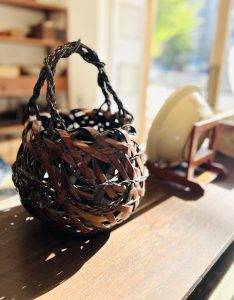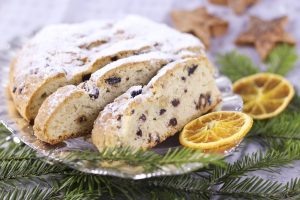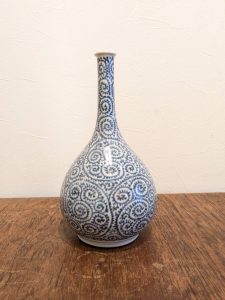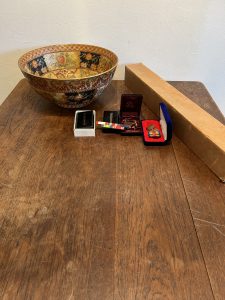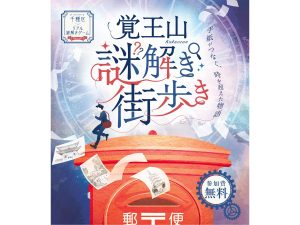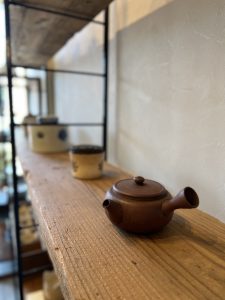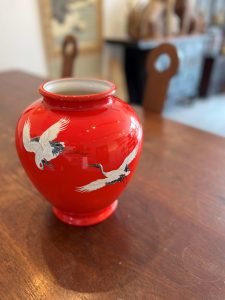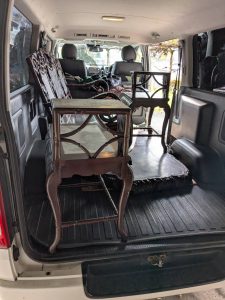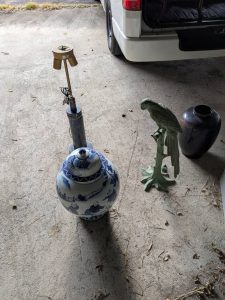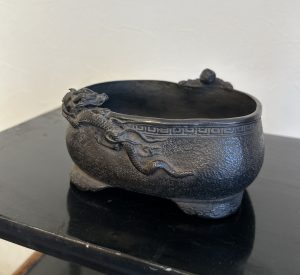クリスマスイルミネーションを満喫しました(愛知県名古屋市千種区姫池通 骨董買取 古美術風光舎)
2024.12.18
友人のお祝い事で久しぶりに東京を訪れました。師走の土日ということでかなりの人混みを覚悟し、気合を入れて挑みました。
電車の込み具合もさることながら、各所のエスカレーターに乗るだけで長蛇の列に並ぶ必要があり、名古屋ではあまり経験しないことだなと感じました。
名古屋へ帰る際、時間があったのでクリスマスイルミネーションを見物すべく、友人の案内で東京駅近くの「丸の内仲通り」を歩くことにしました。昔の丸の内といえば金融機関などのオフィスが立ち並ぶ無機質な街並みのイメージでしたが、整備改修により「クルマのための通路」から「人が中心の空間」に生まれ変わったそうです。
ケヤキ、カツラ、アメリカフウ、シナの木などの落葉樹が植えられ、地面は斑岩の石畳が歩道と車道に敷き詰められ、ヨーロッパの通りのような雰囲気になっております。
土日祝日は11時から17時まで歩行者天国となっており、キッチンカ―と共に通りにはテーブルセットが配置され、多くの人が外で木漏れ日のもと食事やお茶を楽しんでいました。外国の方も多いせいか一瞬ここは日本ですよねと疑ってしまいそうでした。
有名ブランドの華やかなショーウインドウやレストランだけでなく、京都のお茶屋さんや美術館などもあり、歩いているだけで気分が高揚する通りでした。
その中でも一際目を引くイルミネーションオブジェ。ティファニーの店舗前に「Bird on a Box(バード オン ア ボックス)」が展示されていました。
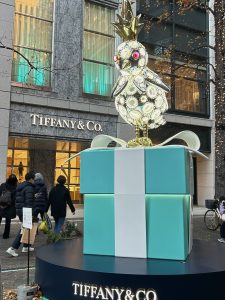
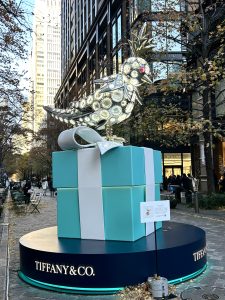
アーティストのジャン・シュランバージェの名作で1965年に発表された「バード オン ア ロック」から着想を得たオブジェだそうです。
私にはあまりご縁のない世界で、なんと可愛らしく華やかな鳥のオブジェなのだろうと、あまりピンときませんでした。
ジャン・シュランバージェは明確なビジョンをもつアーティストで、彼の故郷であるカリブ海のグアドループで出会った黄色いオウムに着想を得て、バード オン ア ロック ブローチをデザインしました。
1995年にティファニーがこのバード オン ア ロックのデザインに伝説的なティファニーダイアモンドをセッティングしたことでティファニーのアイコン的存在となりました。
ユーモアあふれる鳥のモチーフと128.54カラットのイエローダイアモンドの組み合わせでした。(私の想像の域を超えております)ティファニーはこのデザインをパリで開催されたジャン・シュランバージェ回顧展で発表し、世界でその名声が高まりました。
その後、2023年リニューアルオープンを記念して、鳥とイエローダイアモンドのデザインは組み換え可能なペンダントとして生まれ変わりました。ティファニーダイアモンドの周りを飛び回るように5羽の鳥のモチーフがあしらわれています。現在はリングやピアスなどもあるそうです。
ティファニーブルーの箱の上に乗っているイルミネーションオブジェの鳥は日が暮れて周囲が暗くなるにつれ輝きを放ち、街行く人の注目を集めておりました。ティファニーブルーは幸運ももたらす鳥とされるコマドリの卵の色「ロビンズ・エッグ・ブルー」に由来しており、幸福や高潔さの象徴と言われています。初期のブルーボックスから100年後に白いサテンのリボンが添えられるようになりました。密かに鳥つながりとなっておりました。
普段は地味に暮らしておりますので、キラキラとした世界は目の保養になるとともに、先人たちの美しいものを追求するパワーに元気をいただきました。
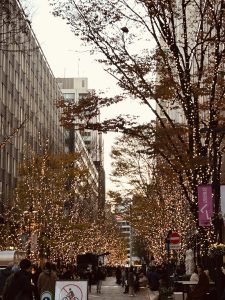
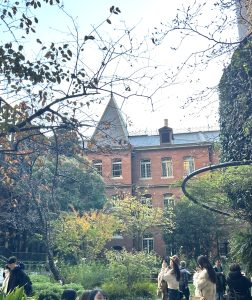
今回は時間の都合で入れなかった「三菱一号館美術館」。外観も素敵で次回は是非訪れたいです。
それでは、また次の機会に。(スタッフH)
I visited Tokyo for the first time in a long time for a friend’s celebration. I was prepared for quite a crowd on a Saturday and Sunday during the New Year’s holiday and braced myself to take on the challenge.
The trains were crowded, and I had to wait in long lines just to get on the escalators at various locations, something I don’t often experience in Nagoya.
On my way back to Nagoya, I had some time to kill, so I decided to take a walk along Marunouchi Naka-dori Avenue near Tokyo Station, guided by a friend, to see the Christmas illuminations. In the past, Marunouchi had the image of an inorganic town with rows of offices for financial institutions and the like, but through maintenance and renovation, it has been transformed from a “passageway for cars” to a “people-centered space.
Deciduous trees such as zelkova, katsura, american fir, and chinese linden have been planted, and the ground is paved with mottled-rock cobblestones on the sidewalks and roadways, creating an atmosphere similar to that of a European street.
On weekends and holidays, the street is a pedestrian zone from 11:00 a.m. to 5:00 p.m. Tables were set up along with kitchen cars, and many people were outside enjoying meals and tea under the sunlight filtering through the trees. Many people were enjoying their meals and tea outside under the sunlight through the trees.
Not only were there glamorous show windows of famous brands and restaurants, but also Kyoto’s tea shops and art museums, and just walking down the street was an uplifting experience.
Among them, one illuminated object caught my attention. Bird on a Box” was displayed in front of the Tiffany store.
It is said to be an object inspired by artist Jean Schlumberger’s masterpiece “Bird on a Rock,” which was released in 1965.
I was not familiar with this world, so I did not really understand what a lovely and gorgeous bird object it was.
Jean Schlumberger is an artist with a clear vision, and the Bird on a Rock brooch was inspired by a yellow parrot he encountered in his native Guadeloupe in the Caribbean.
In 1995, Tiffany & Co. set the Bird on a Rock design with the legendary Tiffany Diamond, making it a Tiffany icon.
It was a combination of a humorous bird motif and 128.54 carats of yellow diamonds. (Tiffany unveiled this design at the Jean Schlumberger retrospective in Paris, which brought it worldwide fame.
Later, to celebrate its reopening in 2023, the bird and yellow diamond design was reborn as a recombinable pendant. It features five birds flying around a Tiffany Diamond. They are now also available as rings and earrings.
The bird, an illuminated object on top of the Tiffany Blue box, shone brightly as the sun went down and the surroundings became dark, attracting the attention of passersby. Tiffany blue is derived from “robin’s egg blue,” the color of the eggs of the robin, a bird believed to bring good luck, and is said to symbolize happiness and integrity. One hundred years after the initial blue box, a white satin ribbon was added to the box. It was secretly a bird connection.
Since I usually live a humble life, the glittering world was a feast for my eyes and energized me with the power of our predecessors in pursuit of beautiful things.
We were not able to visit the Mitsubishi Ichigokan Museum this time due to time constraints. The exterior of the museum is also lovely, and I would definitely like to visit next time.
See you next time. (Staff H)
*****************
ご実家の整理やお片付けなどをされている方のご相談などが多くございます。
お片付けなどくれぐれもご無理のないようになさってくださいませ。
風光舎では古美術品や骨董品の他にも絵画や宝石、趣味のお品など様々なジャンルのものを買受しております。
お片付けをされていて、こういうものでもいいのかしらと迷われているものでも、どうぞお気軽にご相談下さいませ。
また風光舎は、出張買取も強化しております。ご近所はもちろん、愛知県内、岐阜県、三重県その他の県へも出張いたします。
まずは、お電話お待ちしております。
愛知県名古屋市千種区姫池通
骨董 買取【古美術 風光舎 名古屋店】
TEL052(734)8444
10:00-18:00 OPEN
#出張買取#骨董#古美術#骨董品#絵画#版画#茶道具#刀剣#彫刻

